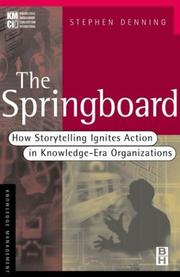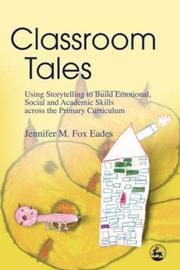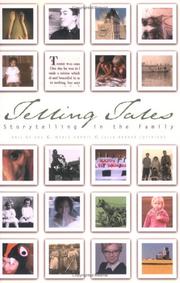| Listing 1 - 10 of 122 | << page >> |
Sort by
|
Book
Abstract | Keywords | Export | Availability | Bookmark
 Loading...
Loading...Choose an application
- Reference Manager
- EndNote
- RefWorks (Direct export to RefWorks)
'Trolls for Trump', virtual rape, fake news - social media discourse, including forms of virtual and real violence, has become a formidable, yet elusive, political force. What characterizes online vitriol? How do we understand the narratives generated, and also address their real-world - even life-and-death - impact? How can hatred, bullying, and dehumanization on social media platforms be addressed and countered in a post-truth world? This book unpicks discourses, metaphors, media dynamics, and framing on social media, to begin to answer these questions. Written for and by cultural and media studies scholars, journalists, political philosophers, digital communication professionals, activists and advocates, this book makes the connections between theoretical approaches from cultural and media studies and practical challenges and experiences 'from the field', providing insight into a rough media landscape.
online violence --- social media --- story-telling --- trolling

ISBN: 0299159337 058508114X 9780585081144 9780299159337 0299159302 0299159345 9780299159306 9780299159344 Year: 1998 Publisher: Madison, Wis. : University of Wisconsin Press,
Abstract | Keywords | Export | Availability | Bookmark
 Loading...
Loading...Choose an application
- Reference Manager
- EndNote
- RefWorks (Direct export to RefWorks)
Tales --- Storytelling --- Story-telling --- Telling of stories --- Oral interpretation --- Children's stories --- Folklore --- Oral interpretation of fiction --- Performance
Book
ISBN: 3030567079 3030567060 Year: 2021 Publisher: Cham, Switzerland : Palgrave Macmillan,
Abstract | Keywords | Export | Availability | Bookmark
 Loading...
Loading...Choose an application
- Reference Manager
- EndNote
- RefWorks (Direct export to RefWorks)
Storytelling --- Story-telling --- Telling of stories --- Oral interpretation --- Children's stories --- Folklore --- Oral interpretation of fiction --- Performance

ISBN: 0750673559 1138131628 9786613898036 0080517560 1136013547 1283585588 9781136013546 9780750673556 9780080517568 9781136013492 9781136013539 9781138131620 1136013539 Year: 2011 Publisher: Oxon [England] : Routledge, an imprint of Taylor & Francis,
Abstract | Keywords | Export | Availability | Bookmark
 Loading...
Loading...Choose an application
- Reference Manager
- EndNote
- RefWorks (Direct export to RefWorks)
The Springboard: How Storytelling Ignites Action in Knowledge-Era Organizations is the first book to teach storytelling as a powerful and formal discipline for organizational change and knowledge management. The book explains how organizations can use certain types of stories (""springboard"" stories) to communicate new or envisioned strategies, structures, identities, goals, and values to employees, partners and even customers. Readers will learn techniques by which they can help their organizations become more unified, responsive
Communication in organizations. --- Storytelling. --- Story-telling --- Telling of stories --- Oral interpretation --- Children's stories --- Folklore --- Oral interpretation of fiction --- Organizational communication --- Organization --- Performance

ISBN: 9786610566334 1846424518 9781846424519 184642450X 9781846424502 9781843103042 1843103044 1843103044 Year: 2006 Publisher: Philadelphia : Jessica Kingsley Publishers,
Abstract | Keywords | Export | Availability | Bookmark
 Loading...
Loading...Choose an application
- Reference Manager
- EndNote
- RefWorks (Direct export to RefWorks)
Fox Eades shows how storytelling is a crucial element of children's education that can enrich the school curriculum and encourage social and thinking skills. She discusses the different kinds of story that are useful in the classroom, and explores the impact of individual and group dynamics on the telling and reception of these stories.
Education, Primary. --- Storytelling. --- Story-telling --- Telling of stories --- Oral interpretation --- Children's stories --- Folklore --- Oral interpretation of fiction --- Children --- Primary education --- Early childhood education --- Performance --- Education (Primary)
Book
ISBN: 1280124407 9786613528261 025300568X 9780253005687 9781280124402 0253352525 0253223741 Year: 2008 Publisher: Bloomington : Indiana University Press,
Abstract | Keywords | Export | Availability | Bookmark
 Loading...
Loading...Choose an application
- Reference Manager
- EndNote
- RefWorks (Direct export to RefWorks)
More than quaint local color, folklore is a crucial part of life in Aghyaran, a mixed Catholic-Protestant border community in Northern Ireland. Neighbors socialize during wakes and ceilis-informal nighttime gatherings-without regard to religious, ethnic, or political affiliation. The witty, sometimes raucous stories swapped on these occasions offer a window into Aghyaran residents' views of self and other in the wake of decades of violent conflict. Through anecdotes about local characters, participants explore the nature of community and identity in ways that transcend Catholic or Protestan
Storytelling --- Story-telling --- Telling of stories --- Oral interpretation --- Children's stories --- Folklore --- Oral interpretation of fiction --- Performance --- Aghyaran (Castlederg, Northern Ireland) --- Folklore.
Book
ISBN: 1443821799 9781443821797 Year: 2010 Publisher: Newcastle upon Tyne : Cambridge Scholars Pub.,
Abstract | Keywords | Export | Availability | Bookmark
 Loading...
Loading...Choose an application
- Reference Manager
- EndNote
- RefWorks (Direct export to RefWorks)
The collection of essays Worlds in Words. Storytelling in Contemporary Theatre takes up the currently widely debated issue of the revival of various techniques of storytelling in contemporary theatre practice and playwriting. This topic is set in a larger context of the crisis of traditional theatrical and dramatic representation in the 20th century and sets the discussion of new storytelling techniques within the framework of cultural and post-colonial studies, as well as the recent theories...
Storytelling. --- Performing arts. --- Show business --- Arts --- Performance art --- Story-telling --- Telling of stories --- Oral interpretation --- Children's stories --- Folklore --- Oral interpretation of fiction --- Performance

ISBN: 1772123382 9781772123388 0888644027 9780888644022 Year: 2003 Publisher: Edmonton, Alberta : University of Alberta Press,
Abstract | Keywords | Export | Availability | Bookmark
 Loading...
Loading...Choose an application
- Reference Manager
- EndNote
- RefWorks (Direct export to RefWorks)
Storytelling is relationship. Stories become the threads that bind a family. We all tell stories about our experiences and daily life. When we die, it is our stories that are remembered. Family stories remembered and shared help the family, and the individuals who comprise it, to survive and flourish. Storytelling within the family provides quality time; creating bonds, increasing listening skills, and fostering communication. Enrich your family life, connect with your children, and celebrate your ancestors by learning to tell family stories, folktales, and nursery rhymes. Telling Tales: Storytelling in the Family is a fascinating guide to the art of gathering and telling stories. Written by three renowned storytellers, Telling Tales includes personal stories, how-to tips and extensive resource lists, and builds upon the success of the acclaimed first edition. Storytelling is contagious. Telling stories helps us make sense of what is happening around us and within ourselves. Stories are our powerful gift to the younger generation.
Storytelling. --- Families --- Family customs --- Family lore --- Story-telling --- Telling of stories --- Oral interpretation --- Children's stories --- Folklore --- Oral interpretation of fiction --- Performance --- Folklore. --- Library Science.
Book
ISBN: 0199910618 0199875413 9780199875412 1306194466 9781306194464 0195396634 9780195396638 0195396626 9780195396621 Year: 2014 Publisher: New York : Oxford University Press,
Abstract | Keywords | Export | Availability | Bookmark
 Loading...
Loading...Choose an application
- Reference Manager
- EndNote
- RefWorks (Direct export to RefWorks)
Good lawyers have an ability to tell stories. Whether they are arguing a murder case or a complex financial securities case, they can capably explain a chain of events to judges and juries so that they understand them. The best lawyers are also able to construct narratives that have an emotional impact on their intended audiences. But what is a narrative, and how can lawyers go about constructing one? How does one transform a cold presentation of facts into a seamless story that clearly and compellingly takes readers not only from point A to point B, but to points C, D, E, F, and G as well? In
Trial practice --- Persuasion (Psychology) --- Storytelling. --- Story-telling --- Telling of stories --- Oral interpretation --- Children's stories --- Folklore --- Oral interpretation of fiction --- Communication --- Conformity --- Psychology, Applied --- Influence (Psychology) --- Propaganda --- Performance
Book
ISBN: 1562866907 9781562866907 1562866893 9781562866891 9781562866891 Year: 2018 Publisher: Alexandria, VA : ATD Press,
Abstract | Keywords | Export | Availability | Bookmark
 Loading...
Loading...Choose an application
- Reference Manager
- EndNote
- RefWorks (Direct export to RefWorks)
Change Your Training Narrative As a trainer, you try to facilitate connections for learners, knowing you must first make connections for yourself. One way to do that is to be a storyteller. But how do you tell stories? How do you find stories to tell? StoryTraining: Selecting and Shaping Stories That Connect explores how to find your stories and deliver them for learners, ultimately strengthening the storyteller you already are. The challenge with storytelling, according to author Hadiya Nuriddin, is in finding a story to tell. This book focuses on that elusive part of storytelling—finding the stories lurking everywhere and telling them. Hadiya shows you how by pulling from other disciplines, especially literature and creative writing, to help you select, structure, shape, and tell stories that can facilitate connections between you, your learners, and the material. You’ll learn about the characteristics of stories that are most useful for facilitating learning, and understand what each looks like in practice. StoryTraining also includes helpful checklists as well as the author’s surefire tips, diagrams for story timelining, and favorite story models. Given the push to make training more relevant, storytelling ability will continue to be in high demand. If you yearn to find your own stories—and to successfully engage with learners and others—this is the facilitation book you have been waiting for.
Storytelling. --- Facilitated communication. --- Communication, Facilitated --- Developmentally disabled --- Story-telling --- Telling of stories --- Oral interpretation --- Children's stories --- Folklore --- Oral interpretation of fiction --- Means of communication --- Performance
| Listing 1 - 10 of 122 | << page >> |
Sort by
|

 Search
Search Feedback
Feedback About UniCat
About UniCat  Help
Help News
News